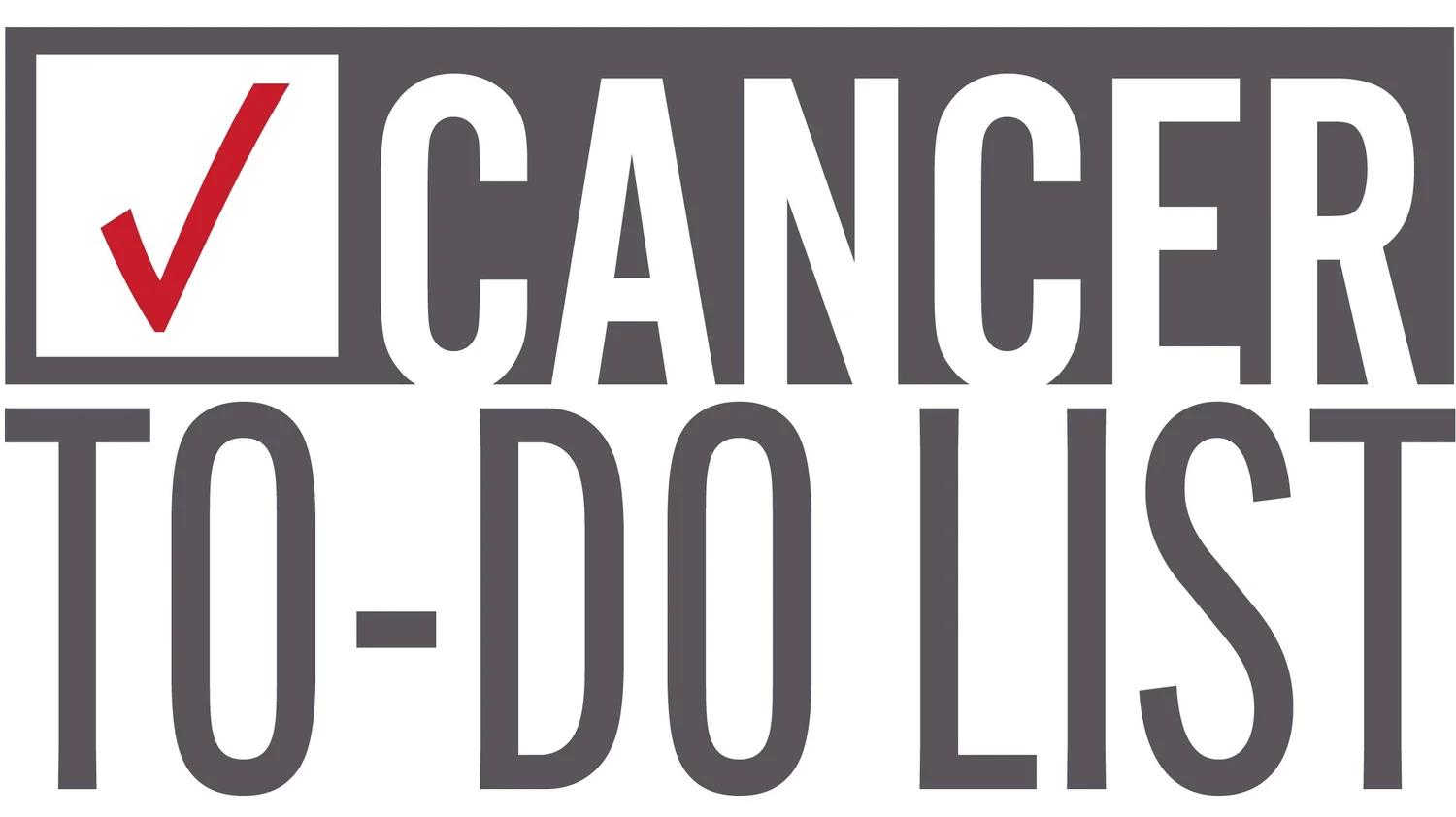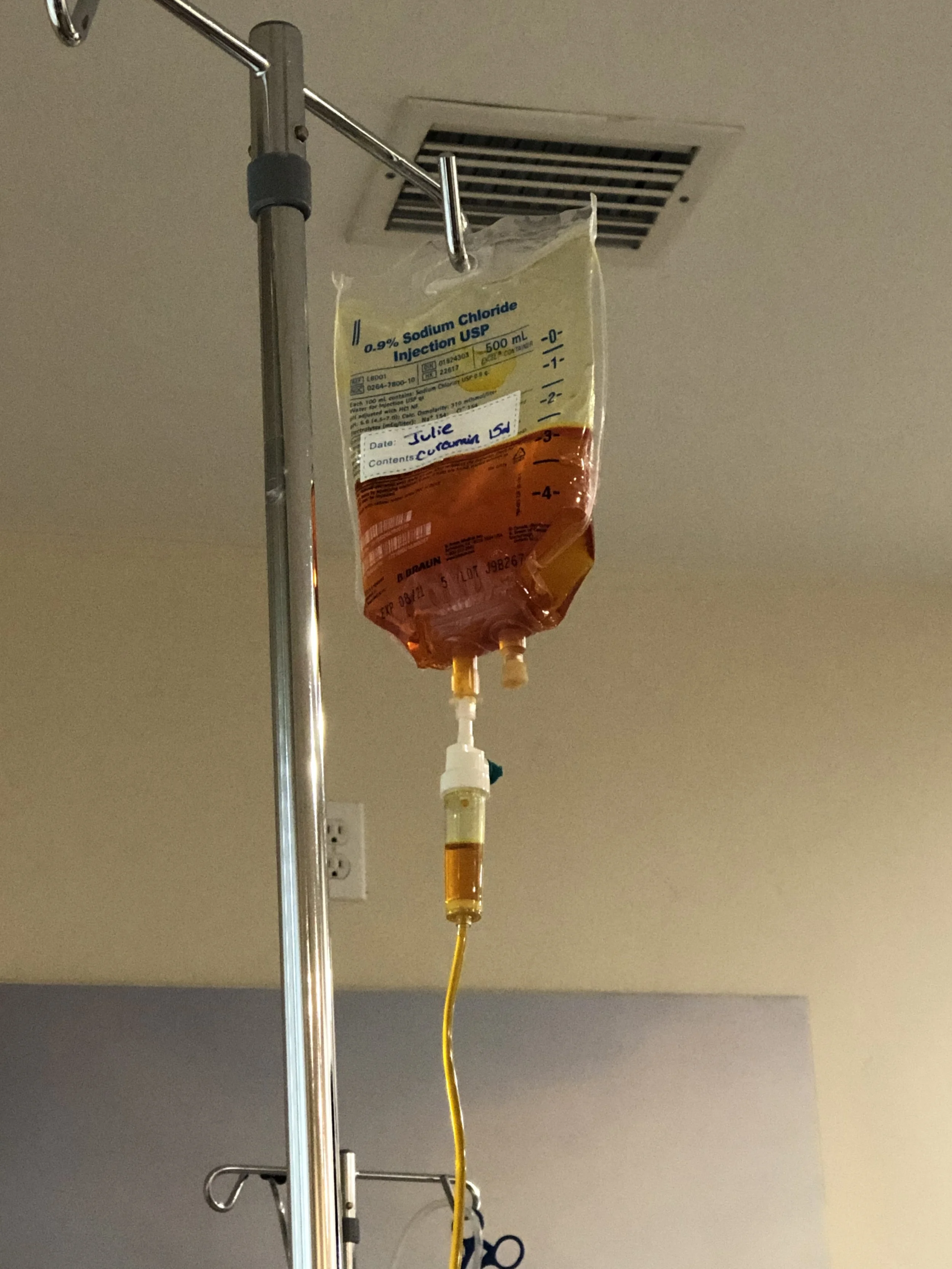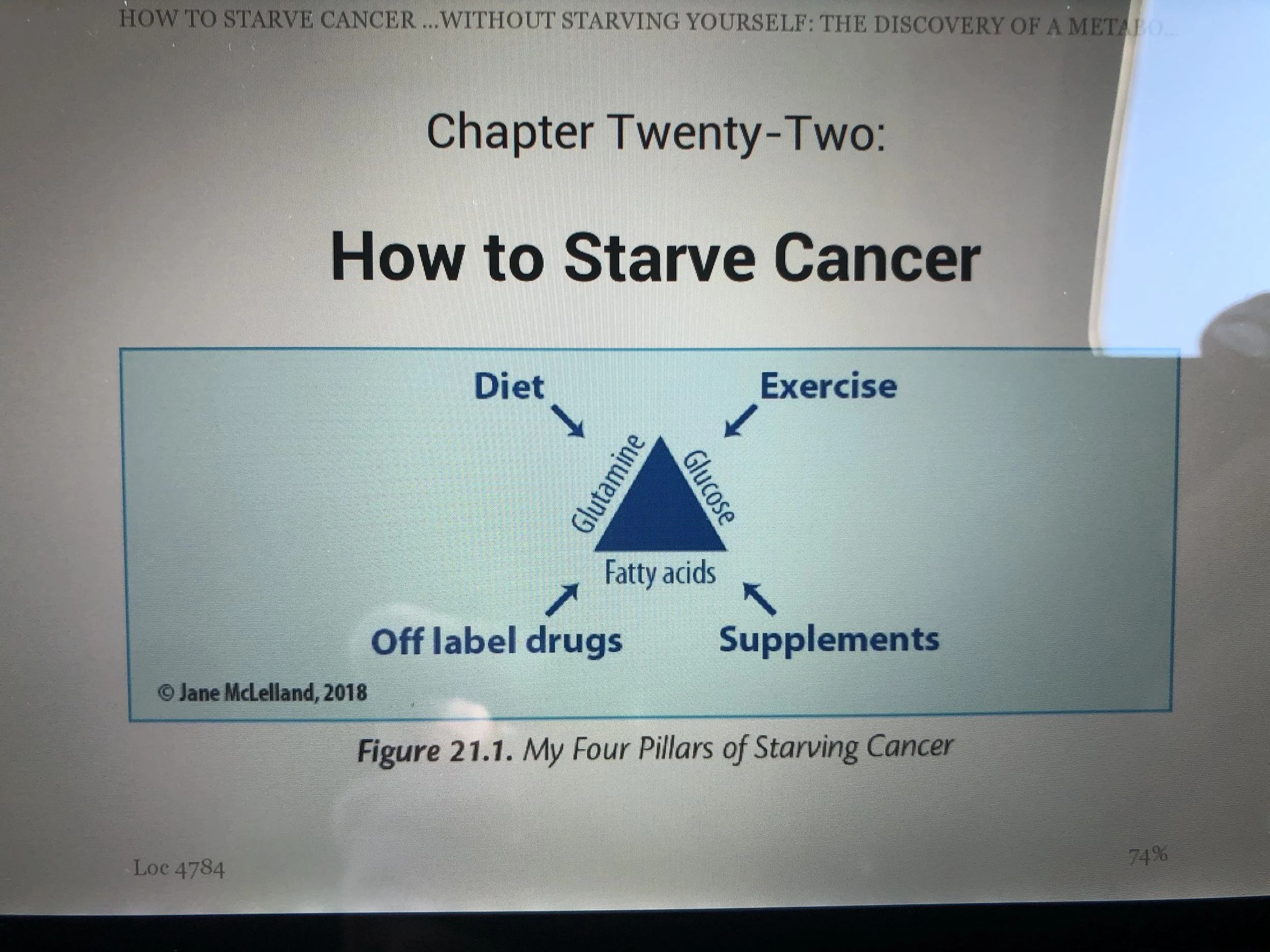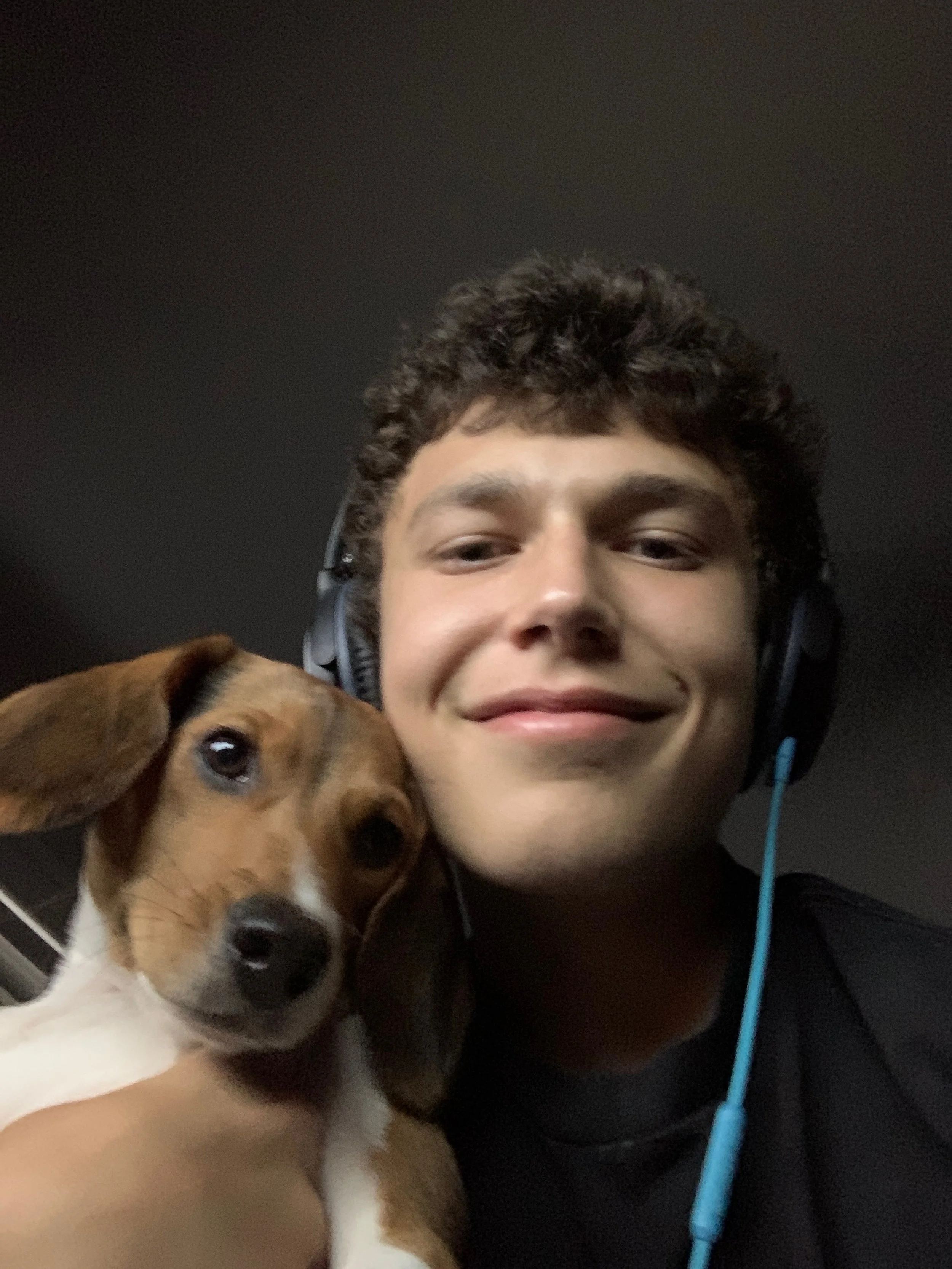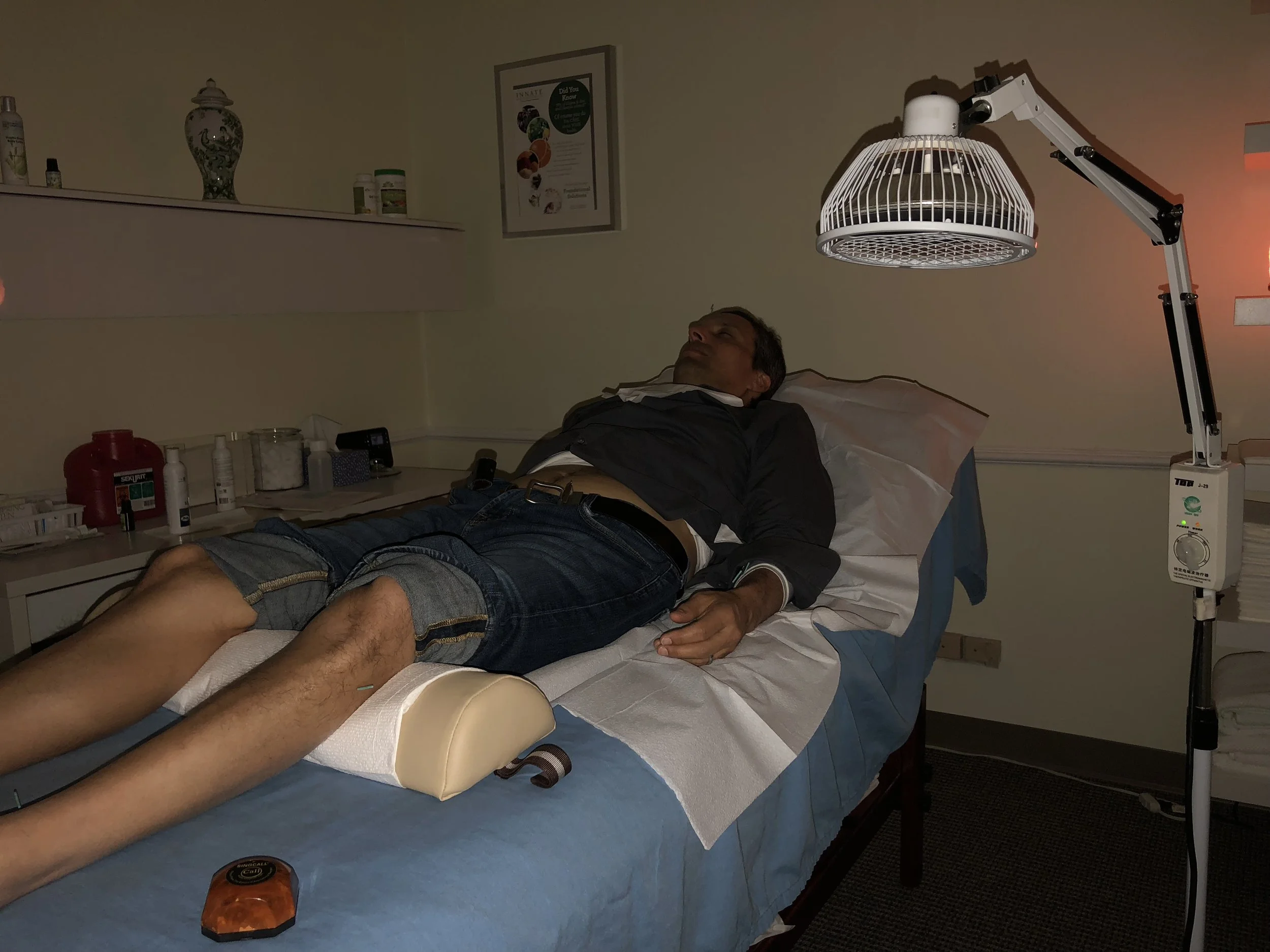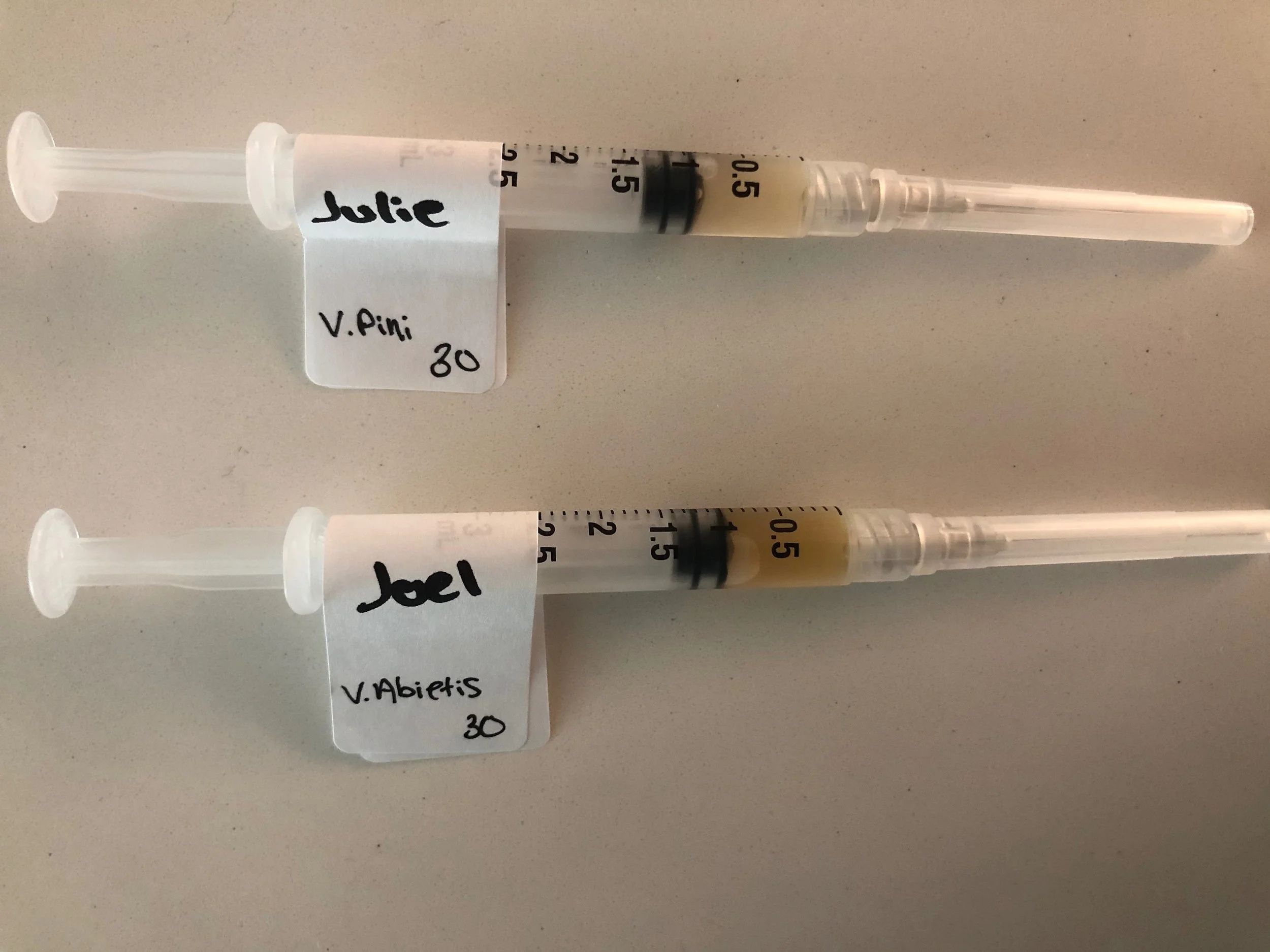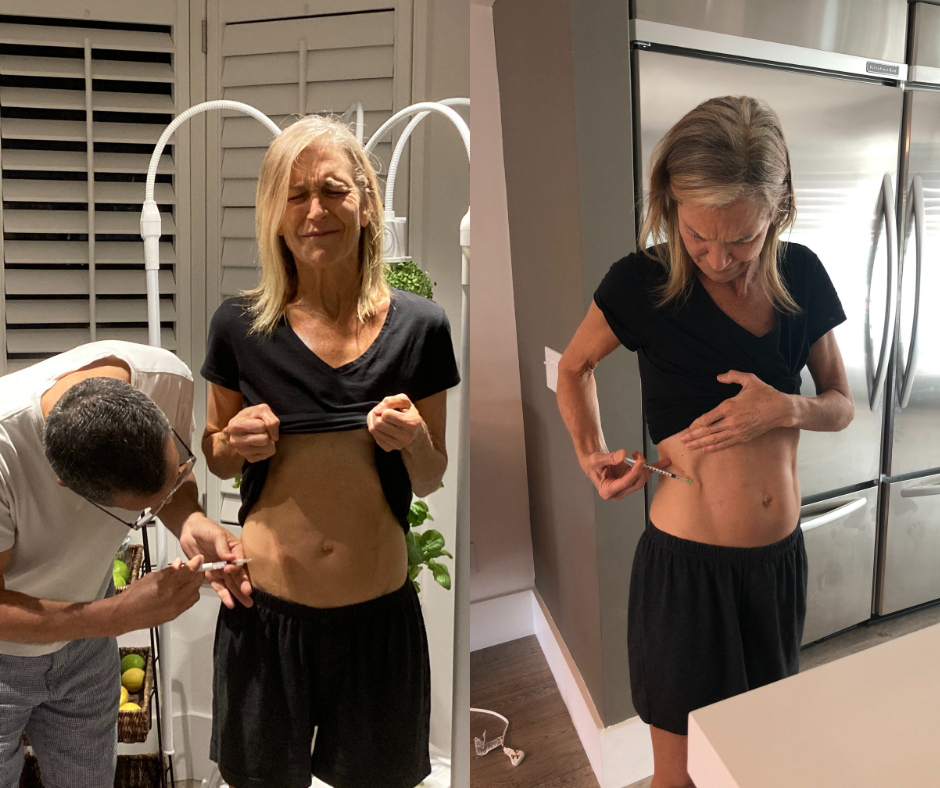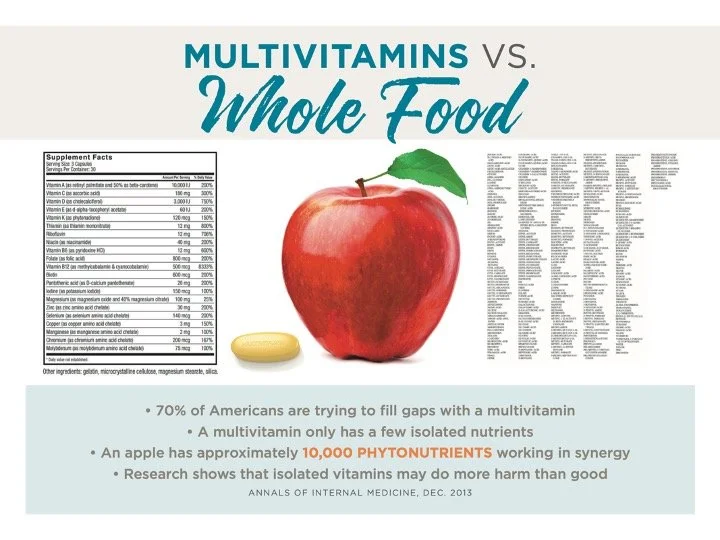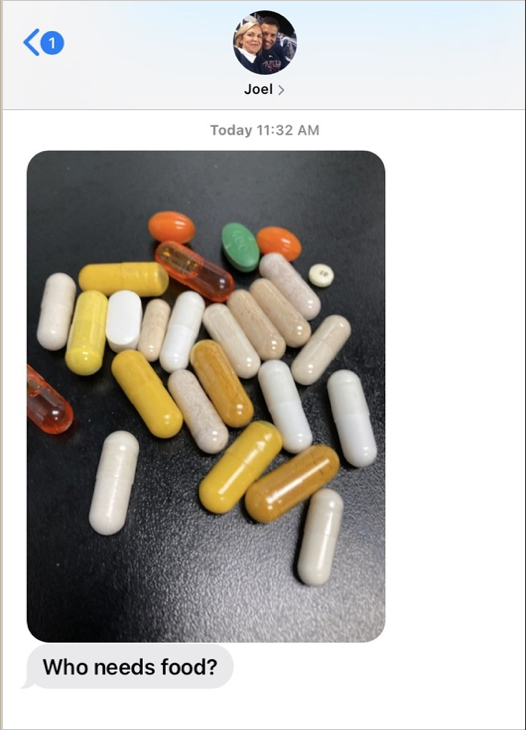
Complementary & Alternative Medicine
CAM Treatment
CAM (complementary and alternative) or non-conventional treatment encompasses natural, non-toxic therapy/therapies that can enhance the health of the body. Examples include acupuncture, traditional Chinese medicine, a hyperbaric chamber, and IV therapeutic infusions. They can also be used alongside conventional treatment. CAM treatments will help address cancer stem cells, which are often the cause of progression or recurrence.
HOLISTIC is often used interchangeably with CAM. Throughout this website, I will be using the term CAM to describe holistic treatment.
ALTERNATIVE refers to treatments done in place of conventional treatment, rather than alongside.
It is best to investigate CAM treatments before deciding on conventional treatment. Unfortunately, most cancer patients start looking for CAM treatments after traditional treatment has failed and cancer has progressed, leaving the body and immune system weakened. There are many CAM treatments that can be done alongside conventional treatments to not only protect the healthy cells, but in some instances, make the conventional treatment more effective. An example of integrating treatments would be low-dose chemotherapy coupled with high-dose IV (intravenous) vitamin C or mistletoe therapy. Another example would be immunotherapy combined with hyperthermia.
Some reasons patients shy away from CAM are lack of education, funding, confusion, and limited research on efficacy. Companies aren't interested in pouring money into natural substances that can't be patented, leaving many good CAM treatments without supporting clinical research.
CAM treatments may help address cancer stem cells, which are usually the cause of progression or recurrence. Non-conventional or CAM treatments help to preserve or protect the normal cells, reduce treatment side effects, and extend survival. Interestingly, research shows that most cancer patients are using CAM therapies as part of their treatment. https://pubmed.ncbi.nlm.nih.gov/15711946/
-
How to vet and select CAM doctors and what to expect in working with them.
-
Learn about CAM treatments that we discovered or experienced on each of our journeys.
-
Learn about supplements and herbs - when to take, best sources, and whether or not they protect against cancer.
I received a curcumin IV at a CAM clinic.
I wish we had incorporated more CAM treatments alongside Joel’s conventional treatment, and even asked his oncologist to work with a CAM doctor which is happening more and more. Integrative cancer care refers to the combining of conventional treatments and CAM (complementary and alternative medicine), and is becoming more and more common.
“When compared to the general population, cancer survivors were more likely to use CAM and communicate this use with providers, indicating a growing integration of CAM in conventional medical care.” https://www.ncbi.nlm.nih.gov/pmc/articles/PMC3564962/
I am sharing our experience in working with CAM doctors, along with many of the treatments we have undergone or learned about on our journey. After my diagnosis and surgeries, we dove headfirst into many CAM therapies, which was just before Covid-19 started. We got up early, kissed the kids goodbye, and drove to a clinic three hours from our home several times a week to undergo multiple treatments. We stopped at organic markets to eat meals. It was an uncertain time in our lives that we will never forget. Read “CAM And Covid” for more of our story.
Since we both had cancer, we felt it necessary to do everything possible to heal our bodies. We also understood that although we had both experienced conventional treatments, we needed to go after cancer stem cells. Joel said, “We have to throw the sink, refrigerator, dishwasher, and everything else at these cancer stem cells!”
We explored various CAM treatments over the course of a year, and my biggest hope is that our experience will help you on your journey.
Selecting a CAM Doctor
There are many clinics offering CAM treatments, and it is difficult to decide where to invest your time and money. Cancer patients used to have to travel to other countries to receive CAM treatments, and many still do visit clinics in other countries, but it is now possible to find good CAM doctors nearby. This person may be a doctor, nurse practitioner, naturopath, or chiropractor. This professional can explain the rationale behind treatment recommendations, and help you ask the right questions. If you haven’t already, visit TheMossReport.com and subscribe in order to access up-to-date information on conventional treatment, CAM treatment, CAM clinics located throughout the world, clinical trials, and more. I especially love that Dr. Moss has proven CAM treatments that have the most evidence for specific cancers so you can start with those treatments.
Our effort to find a CAM doctor began by identifying a well-researched treatment called mistletoe for breast and colon cancer, so we found a doctor who administered mistletoe. Joel and I found our doctor and clinic through an organization called Believe Big. You can search your state on the website for an integrative practitioner closest to you. Visit the Treatment page for a list of clinics and websites. Read “CAM And Covid” for more about the treatments we pursued.
If you’re already seeing a CAM physician, use the Moss website as a filter for his or her treatment recommendations. This will simplify your decision-making process. There is not a cookie-cutter CAM protocol for everyone, because every person’s health and cancer diagnosis are so unique.
While there are books, websites, conferences, symposia, and testimonials about CAM treatments constantly being shared, I recommend you favor choosing treatments that are supported by clinical research. Keep in mind, however, that many CAM treatments are not well-researched simply due to a lack of funding. Because of this, many of these treatments are not covered by health insurance and must be paid out of pocket.
I think most health professionals really want to help people. CAM doctors will most likely use a combination of therapies to treat cancer. Our experience in working with many doctors is that they were open to giving us evidence for their recommendations. Many even admitted that they had changed course in their treatment approaches when they learned things weren’t working or that there was a more effective treatment option. Choose CAM doctors who are open to sharing research with you on their suggestions, and be sure to vet the doctors — are they licensed? Skilled? Well-respected? Visit the Treatment page for a list of questions for CAM doctors.
Members of your CAM medical team may include: acupuncturist, chiropractor, holistic/integrative doctor, traditional Chinese medicine doctor, biological dentist, nutritionist/dietician, physical therapist, massage therapist, personal trainer, psychologist, and counselor.
Just before starting at the clinic, we read Jane McLelland’s book How To Starve Cancer; it was a good introduction for us in understanding what would happen at the clinic. Jane had stage 4 cervical cancer that spread to her lung. Jane’s “starve cancer” plan included a combination of diet, exercise, supplements, IV therapies, and off-label drugs to kill cancer cells. This is exactly the kind of protocol the doctor did with Joel and me. Read “CAM And Covid” for more.
What to Expect
APPOINTMENT
There will most likely be a $200-$700 fee for your first CAM consultation. Then there may be additional fees for follow-up appointments to review medical results or assess progress. Ask for a clear explanation of what the initial consultation will include and how much follow-up appointments will cost, so you have a full understanding before you begin. Also ask if the doctor will review the treatment protocol with you, present you with any research to support recommendations, and allow you to ask questions so you clearly understand the path forward.
DIETARY PROTOCOL
Every CAM doctor we saw recommended either the ketogenic or Mediterranean diet for cancer. Joel and I tried a vegan keto diet, but neither of us felt good. The Mediterranean diet didn’t make sense to us either — because olive oil is recommended as a primary fat source, and the diet also allows for meat and dairy products. Isn’t it interesting that many use this diet to tout the benefits of olive oil, meat, and red wine, but in 2018, the New England Journal of Medicine retracted one of the largest studies that they had published in 2013; showing that 30% of heart attacks and strokes could be avoided by eating diets high in olive oil, nuts, wine, fish, and fruits and vegetables. Of course, I believe that a diet rich in plants is beneficial, but I also believe it should be lower in fat. https://www.npr.org/sections/health-shots/2018/06/13/619619302/errors-trigger-retraction-of-study-on-mediterranean-diets-heart-benefits
I share this because it is important to study recommendations from any type of doctor and make your decisions based on the body of scientific evidence. Visit the Diet page to learn more.
IV THERAPIES
Almost all of us have experienced an IV (intravenous) therapy at one point in our lives. IV therapies have been used by hospitals to treat dehydration or people who are not able to eat or digest food. However, IV therapies offered as CAM treatments are IVs that deliver nutrients, like ALA (alpha lipoic acid), very quickly into the body. These IV therapies are becoming more and more popular, especially for cancer. They can be helpful before, during, or after cancer treatment, and any time the immune system needs assistance. We worked with CAM doctors who customized nutritional IV therapeutic infusions for each of us for over a year. One word of caution: too many IVs consecutively can result in collapsed veins. Because we traveled to a clinic several hours from our home to receive IVs, we would do 4-6 hours of IVs each day, several times per week. We both experienced collapsed veins. I wish we had understood this risk. Read more about IV therapies in the IV (intravenous) Therapeutic Infusions section below.
LABS
CAM professionals will order conventional tests, including blood, urine, saliva, and stool. They will also order non-traditional blood tests, such as hCG (human chorionic gonadotropin), IGF-1 (insulin-like growth factor 1), and VEGF (vascular endothelial growth factor). They may also order a test to measure CTCs (circulating tumor cells), which you can learn more about on the Tests page. Remember that these labs may be helpful in uncovering underlying issues, but before you agree to the test, be sure to ask some questions. Ask why they want to run that particular test and how the results will guide treatment. If they can’t give an explanation, you may be better off not paying for the test to be run.
OFF-LABEL DRUGS
CAM doctors may suggest off-label drugs that could be used for your type of cancer. Off-label is when a physician prescribes a drug that the U.S. Food and Drug Administration (FDA) has approved to treat a condition different than your condition. Visit the Conventional Treatment page to learn more about off-label drugs.
SUPPLEMENTS
CAM doctors will most likely recommend supplements based on your test results (blood, urine, stool, etc.). At one point, we felt like we were swallowing supplements all day long, and we both felt sick to our stomachs. We were also spending a lot of money. We were following the doctor's protocol, which was to take isolated supplements. But getting our vitamins primarily from isolated supplements instead of whole foods went against everything we believed. Sometimes there is a place for supplements in an area of deficiency. With the guidance of a physician, it may be a good idea to take supplements for several months to get your body balanced. Remember to ask for the research behind the doctor’s supplement recommendations. Eventually, we went back to leaning on our diet to get what we needed. We take just a few supplements (derived from whole foods) every day, and rotate others that we feel are valuable. Visit the Kitchen Treats page to learn more about the supplements we used.
TREATMENTS (cam)
Most CAM treatments are not covered by health insurance and can be very expensive. Most clinics will charge you for individual CAM treatments, but ask for a clear explanation of the cost of your protocol up front.
CAM and Covid: TREATMENTS TOGETHER WHILE THE WORLD SHUT DOWN
-
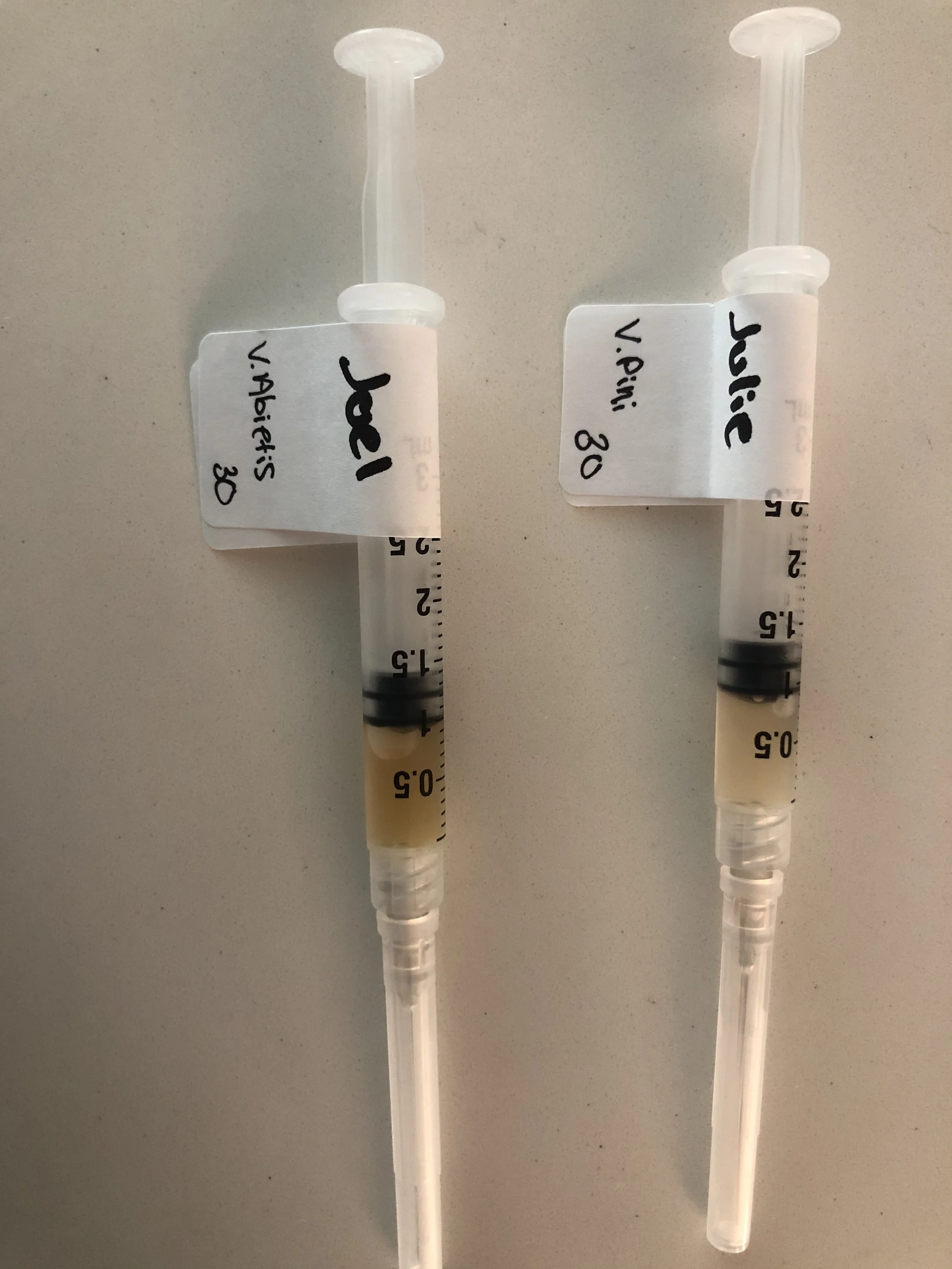
There was only one doctor in Florida approved to treat with mistletoe. Her clinic was a three-hour drive from our home, so we began making the trip three times per week in February of 2020.
-

Then Covid-19 hit the U.S., and for nine months life completely shut down — but it didn't stop our visits to the clinic. We continued to drive back and forth at least three times per week.
-
We would get up, leave our kids to do their school online, and head to the clinic for 5-7 hours of treatment at a time. It was a bizarre, scary time for everyone, but especially our kids.
CAM Treatments
Below is a list of all CAM treatments that are covered on this website. These are the most common ones that we came across on our journey. Most of these tools can be used before, alongside, or after cancer treatment to strengthen the systems of the body (i.e. immune, lymphatic, etc.). Remember that the most important thing all cancer patients can do is move toward an optimal diet, lose weight if needed, and identify and improve any underlying conditions. I pray you can find a CAM doctor to guide you as to which treatments may be best for you.
*I have starred the CAM treatments below that we explored or implemented. Any treatment included on the list below that we haven’t used is there because I have heard or read good things about it. Many of these are considered immunotherapies. Visit the Conventional Treatment page to learn more about immunotherapy.
CAM TREATMENTS
Joel getting acupuncture after chemotherapy.
*ACUPUNCTURE
Ancient Chinese method of sticking very thin needles into designated points along invisible meridians (network of energy channels) that run through the body.
Acupuncture points are stimulated to promote health or to potentially reduce disease symptoms, and to lessen the side effects of radiation and chemotherapy. https://pubmed.ncbi.nlm.nih.gov/20406930/
Acupuncture is now so generally accepted that it is likely being offered at your cancer center.
“A potential role for acupuncture was found in the following cancer symptoms: pain, nausea and vomiting, xerostomia (dry mouth), hot flushes, fatigue, anxiety, depression and insomnia.” https://pubmed.ncbi.nlm.nih.gov/20605536/
The National Institutes of Health (NIH) also recognizes acupuncture as an effective treatment for chemotherapy-related nausea. https://pubmed.ncbi.nlm.nih.gov/15524070/
Used in traditional Chinese medicine. Read “Traditional Chinese Medicine Experience” for more of my experience.
Our Experience: Joel did acupuncture during chemotherapy; I did acupuncture before, during, and after my diagnosis.
*Biological Dentistry
Biological dentists do not use toxic materials like mercury in their practice.
This kind of specialized dentist will examine your dental health to see if there are any underlying issues that may be affecting your body, such as a root canal that didn't heal correctly or an infection underneath an extracted tooth.
My Experience: Surprisingly, there was not one biological dentist in the city I live in, requiring me to look outside my area to find a biological dentist. Read “Biological Dentistry Journey” for my full story.
My biological dentist taught me so much and gifted me with the photos on this website at the end of my oral journey!
*Cannabis (medical marijuana)
A more natural way to manage side effects; such as nausea, pain, and trouble sleeping.
May help a patient avoid prescription drugs.
Apply to receive a medical cannabis card right away if you live in a state that has approved it.
Our Experience: Joel used medical cannabis alongside chemotherapy and radiation, and he was able to let go of many medications that he was taking for side effects, such as nausea. Read “Hello, Cannabis! Goodbye, Drugs!” for more information.
BACKGROUND ON MEDICAL CANNABIS
Cannabis and marijuana are interchangeable terms. Cannabis sativa is one of the world's oldest cultivated plants. Cannabinoids, marijuana and hemp are all organic products derived from the Cannabis sativa plant and come mainly in the form of oils, inhaled substances and edibles. There are two kinds of cannabis: medical and CBD. Medical cannabis contains THC (delta-9-tetrahydrocannabinol), a major ingredient in marijuana, which is the psychoactive part of cannabis that causes an intoxicated state. Cannabidiol (CBD) is the most abundant cannabinoid in hemp and lacks the intoxicating properties. Even though it is non-psychoactive, it has been shown to have a positive effect in the body for lowering pain and inflammation, in addition to helping with depression and sleep.
From ancient times until the 1930s, marijuana was esteemed for its medicinal qualities. At one point, Americans were encouraged to grow it for medicinal use, and cannabis oil was available in all pharmacies in the U.S. Then in the 1930s, “reefer madness” hysteria was hyped and there was a large campaign to make people think poorly of the plant. Then in 1937, Congress enacted legislation to ban its use and sale. Since 1970, marijuana has been classified as a Schedule 1 drug in the Controlled Substances Act, along with heroin, cocaine, and other drugs. This made it very hard for scientists to study the plant, so that is why there is such limited research here in the U.S.
On our first visit to pick up medical cannabis, we were so confused! The state of Florida had just approved cannabis. So the whole process was new, even to the cannabis staff.
Medical cannabis (THC) is useful for cancer patients. According to the Moss Report, “THC (delta-9-tetrahydrocannabinol), a major ingredient in marijuana, is able to control nausea and is marketed as a medicine called dronabinol (Marinol®). That is because the so-called “endo-cannabinoid” system in the body is involved with the regulation of both appetite and nausea/vomiting.” https://pubmed.ncbi.nlm.nih.gov/16849753/ https://pubmed.ncbi.nlm.nih.gov/1652611/
If you are going through treatment and live in a state where medical cannabis is legalized, find a doctor who can prescribe it in case you need it for pain, nausea, and sleep. Cannabis is still illegal in many states. There are some understandable concerns with cannabis use and legalization, such as the lack of regulation in the growing process and production, synthetic cannabinoids being marketed to younger users, and the risk of addictive potential that can create negative consequences.
Chemosensitivity Testing
A lab test to determine how effective specific chemotherapy agents are against an individual patient's cancer cells. https://pubmed.ncbi.nlm.nih.gov/15901922/
Chronomodulated Chemotherapy
Special programmable chemotherapy infusion pumps that infuse the drug in very small increments to attack cancer cells when they are more vulnerable; and protect healthy cells when they are at rest and least sensitive to the toxicity of chemo.
Dr. Block uses this at the Block Center for Integrative Cancer Treatment. https://blockmd.com/2021/05/05/what-is-chronomodulated-chemotherapy-and-how-does-it-work/
COLEY’S TOXINS
William Coley was a surgical oncologist who developed a vaccine (Coley’s toxins) based on the observation that cancer patients (with inoperable cancer) have been shown to improve to the point of cure when exposed to bacterial infection. The infection stimulates the immune system which, in turn, has the side effect of shrinking the tumor. According to the Iowa Orthopaedic Journal, William Coley deserves the title of “Father of Immunotherapy.” Visit the Conventional Treatment page to learn more.
DENdritic cell vaccine
The DC (dendritic cells) vaccine is a type of immunotherapy — to harness the potential of a patient's own immune system (create an immune response) to eliminate tumor cells.
Several clinical studies have been initiated in which DCs are a feasible, nontoxic approach to boost an immune response against malignant tumors in patients with cancer. https://pubmed.ncbi.nlm.nih.gov/12218781/
A 2004 study showed that two women with metastatic breast cancer achieved tumor shrinkage after being treated with a DC vaccine. https://pubmed.ncbi.nlm.nih.gov/15269142/
It is being combined with hyperthermia (extreme heat). https://www.ncbi.nlm.nih.gov/pmc/articles/PMC7836805/
*ESSENTIAL OILS
A systematic review of the literature on the effect of inhaled essential oils for sleep showed that lavender, peppermint, and jasmine were the most effective essential oils for improving sleep quality. https://www.researchgate.net/publication/261601915_A_Systematic_Review_of_the_Effect_of_Inhaled_Essential_Oils_on_Sleep
According to a review of 30 studies, aromatherapy improves sleep quality and reduces stress, pain, anxiety, depression, and fatigue in adults and elderly people. https://www.sciencedirect.com/science/article/pii/S0965229921000807
Rub lavender oil on the bottom of the feet to relax the body and/or to help with sleep.
Consume peppermint to help control nausea. https://pubmed.ncbi.nlm.nih.gov/32196008/
Diffusing essential oils is a simple way to experience the health benefits of essential oil. A diffuser that does not require water is a simpler, more user-friendly way to diffuse.
Applying essential oils “neat” (directly to the skin) is not recommended. Essential oils should be diluted in a carrier oil (coconut oil, jojoba oil, etc.) before applying to the skin. Mix one drop essential oil per teaspoon carrier oil and apply to desired area of the body.
Avoid using essential oils near sensitive areas such as the eyes, ears, and mouth. Do not apply them to broken, inflamed, or irritated skin.
Our Experience: During treatment, Joel used essential oils in foot baths, when the smell didn’t make him nauseated. He takes a foot bath at least once a week now. I use a variety of essential oils on my body, such as lavender oil before bed.
Visit the Julie’s Online Favorites page for a list of essential oils.
*Essiac Tea
An herbal remedy containing burdock root, slippery elm, sheep sorrel, Turkey rhubarb, watercress, blessed thistle, red clover, and kelp.
Many of these herbal ingredients have benefits on their own, such as burdock. https://pubmed.ncbi.nlm.nih.gov/21429215/
Essiac tea may have originated with Native Americans, who called this a “Tea of Life.” It was popularized by a nurse named Rene Caisse in the 1920s. She named the tea “essiac,” which is her name, spelled backwards. Apparently, she gave the tea to hundreds of cancer patients and claimed that some were cured as a result.
There is not clear research evidence that Essiac is helpful for cancer patients as a cure or alongside conventional treatment. https://pubmed.ncbi.nlm.nih.gov/9559016/
There are some side effects, such as nausea, vomiting, headaches, and flu-like symptoms.
You can purchase a version of Essiac tea, called Flor Essence, at a health food store, or you can make your own. Learn more on Cancer.gov.
Essiac Tea Brewing Instructions:
Boil one gallon of spring water in a large pot.
Add 1/3 cup of Essiac herbs.
Simmer for 5 minutes, stirring occasionally.
Leave tea in the pot, turn off heat, and let the mixture sit at room temperature for at least 12 hours, but less than 24 hours.
Do not strain the tea, but slowly funnel into a gallon container so that most of the thickened herb stays in the pan. You can throw that away when you’ve gotten most of the liquid out.
Store in the refrigerator. Shake before drinking. Take on an empty stomach.
Many people drink approximately 3 ounces, 3 times per day when they are first diagnosed, which is what we did.
*Fasting
Fasting, or calorie and protein restriction, can also be referred to as dietary energy restriction (DER). There are short-term fasts, which Joel did during chemotherapy; and there are long-term fasts, which I did at water fasting facilities under the guidance of a trained physician.
Short-term fasts
Short-term water fasting can be done at home during cancer treatment. Discuss this with your physician.
Research shows that a short fast before chemo decreases oxidative stress to normal cells, reduces inflammation, and allows the toxic agents to work even more effectively on the cancer cells. There aren't drugs that can do this. https://pubmed.ncbi.nlm.nih.gov/18378900/ https://pubmed.ncbi.nlm.nih.gov/20157582/
Research shows that a short fast before chemo can decrease side effects. https://pubmed.ncbi.nlm.nih.gov/21088487/
Joel’s Experience: When we learned there was research on the efficacy of fasting, Joel fasted for 1-2 days prior to and after chemotherapy. This was easy for him to do since he was experiencing nausea and loss of appetite from the chemotherapy.
Long-term fasts
Water-only fasting under the guidance of a trained physician has been proven to be safe and effective for improving many health conditions, including cancer, especially advanced cancers.
This kind of fast entails consuming only water (no food) for a period of time, even up to 40 days. When less energy is being used to eat, digest, and process food, more energy is available for healing and repair. Not everyone is a candidate. For instance, Type 1 diabetics, pregnant women, or people with certain types of cancer would not be considered.
Visit the Detox page to learn more about the benefits of medically supervised, water-only fasts. If you are a candidate, it can be a perfect way to jumpstart detox, prepare for or heal from treatment, and reset your taste buds in order to adapt to a plant-based diet.
My Experience: I have done two medically supervised, water-only fasts. Read “Water Fasting Experiences” for more.
*Hyperbaric Oxygen Therapy / Hyperbaric Chamber
This therapy fuels the blood plasma and tissues with oxygen, and has been shown to reduce inflammation and facilitate healing.
Medical research has shown that this is safe for cancer patients, but more research needs to be done to prove that HBO inhibits tumor growth. https://www.ncbi.nlm.nih.gov/pmc/articles/PMC3510426/
My Experience: I have experienced the hyperbaric chamber, and once I settled the claustrophobic feeling and focused on the fact that oxygen was fueling my tissues, I was fine.
Getting ready to take off into space (just kidding!) This hyperbaric chamber was where my tissues were fueled with oxygen.
Hyperthermia
This therapy heats the body tissue to high temperatures, like a fever, in order to damage or kill cancer cells and not harm normal tissue.
Research is showing promise for hyperthermia and cancer.
Hyperthermia is being used in combination with some immunotherapies.
The two types of hyperthermia are whole body and local, which is more simple.
Hyperthermia is being used more in Europe than in the U.S. https://www.cancer.gov/about-cancer/treatment/types/hyperthermia https://www.ncbi.nlm.nih.gov/pmc/articles/PMC7999567/
IPT (Insulin Potentiation Chemotherapy)
IPT allows a patient to receive a smaller amount of chemotherapy that is more targeted. First, a patient is given insulin when the blood glucose levels decrease, and the cancer cells will momentarily be starved. If both glucose and chemotherapy drugs are administered while the cells are starved for glucose, the cancer cell membranes will open for glucose and for more of the chemotherapeutic agents. Under these conditions, a lower dose of chemotherapy would be as effective as a higher dose.
This low-dose chemotherapy is often coupled with IV vitamin C.
*IV (iNTRAVENOUS) Therapeutic Infusions
Involves administering fluids and nutrients through IV (intravenously).
Our Experience: We worked with CAM doctors who customized nutritional IV therapeutic infusions for each of us for over a year. Here is a list of some of the IVs we utilized: ALA (alpha lipoic acid), curcumin, glutathione, H202 (hydrogen peroxide), Poly-MVA, phosphatidylcholine, MSM (methylsulfonylmethane), N-acetyl cysteine (NAC), NAD (nicotinamide adenine dinucleotide), UVBI (ultra violet blood irradiation), high-dose vitamin C. Mistletoe is also offered as an IV, but we did subcutaneous injections, because that’s the only way our CAM doctor offered it. I wish we had done them alongside Joel’s chemotherapy, especially high-dose IV vitamin C, but we didn’t know enough about them at the time.
*HIGH-DOSE IV (INTRAVENOUS) VITAMIN C
Given intravenously, high-dose vitamin C can be beneficial before and after chemotherapy. https://pubmed.ncbi.nlm.nih.gov/1068480/
Scientists are beginning to discover that high-dose IVC may have anti-tumor capabilities and work effectively alongside chemotherapy, keeping the chemo in the cancer cells longer and reducing side effects.
CAM practitioners use IVC at high doses, like100 grams.
Research shows that vitamin C gets taken up seven times greater than when given through IV. https://pubmed.ncbi.nlm.nih.gov/15068981/
May harm or even kill cancer stem cells (original cancer cells that resist chemo and radiation).
Even though high-dose IVC seems promising, it is not getting the attention of the medical community.
Our Experience: I wish we had known about the IVC while Joel was going through chemotherapy, but once we started CAM treatments together after my diagnosis, we received IV vitamin C for over a year.
Jane McLelland, in her book How To Starve Cancer, describes the Antioxidant versus Pro-oxidant effect: "At high doses, intravenous vitamin C turns from an antioxidant into a pro-oxidant, giving off free oxygen to the area around a tumor. In this case, the reactive oxygen species (ROS) is hydrogen peroxide (H2O2). This oxygen production near the cell causes a kind of 'rusting' and allows the cell to be attacked and killed. This balance of ROS production and the antioxidant status of cells is crucial to the survival or death of tumor cells. The judicious use of antioxidants is something I have seen patients continue to get wrong. Many patients take huge amounts of antioxidants that counter the effect of the intravenous vitamin C and then are disappointed it hasn't worked." She goes on to discuss the dosage of IV vitamin C. "Unlike the situation with chemotherapy, more is most definitely more, and the higher the amount (up to 75g), the more it becomes selectively toxic to cancer cells by producing more H2O2 (Hydrogen Peroxide)." She finishes with this: "Best of all, for such a potentially useful therapy, normal cells remain completely unharmed."
Jane also points out that IVC works best for cancer when it is combined with off-label drugs, supplements, etc. so work with a CAM professional to guide you.
HIGH-DOSE iv vitamin C research:
https://isom.ca/article/high-dose-iv-vitamin-c-metastatic-breast-cancer-case-report/
https://pubmed.ncbi.nlm.nih.gov/24500406/
https://pubmed.ncbi.nlm.nih.gov/1068480/
https://pubmed.ncbi.nlm.nih.gov/16157892/
https://www.ncbi.nlm.nih.gov/pmc/articles/PMC6566697/
The clinic decorated our IV poles for our birthdays! The staff was so caring.
*Mistletoe
We did mistletoe treatments for over a year.
A semi-parasite that lives on trees and has been used for hundreds of years to treat many conditions.
The active ingredients in mistletoe are polypeptides, including lectins and viscotoxins, which are thought to be mainly responsible for immune stimulation and tumor inhibition.
Mistletoe berries and leaves are highly poisonous and can even be deadly.
Mistletoe extract is administered intravenously (IV) or through subcutaneous injections. Mistletoe therapy should only be given through a qualified doctor.
There are a variety of brand names (Iscador, Eurixor, Helixor, Isorel, Iscucin, and abnobaVISCUM).
The first mistletoe therapy clinical trial utilizing intravenous mistletoe in collaboration with The Johns Hopkins School of Medicine was published by the American Association for Cancer Research in February, 2023. Trial results showed that mistletoe improved a cancer patient's quality of life and is safe. In the trial, Helixor mistletoe was administered intravenously three times a week to 21 participants. Overall, the trial results warranted doing a Phase II trial. https://aacrjournals.org/cancerrescommun/article/doi/10.1158/2767-9764.CRC-23-0002/716484/Phase-I-Trial-of-Intravenous-Mistletoe-Extract-in https://www.believebig.org/johns-hopkins-kimmel-cancer-center-completed-phase-i-trial-of-intravenous-mistletoe/
The German “FDA” approved Iscador (mistletoe) for the treatment of advanced breast cancer 50 years ago and many German doctors still use mistletoe in their practice. https://www.researchgate.net/publication/12251955_Oncologic_mistletoe_therapy_physicians'_use_and_estimation_of_efficiency
Mistletoe can be used as an adjuvant to chemotherapy and radiation. https://pubmed.ncbi.nlm.nih.gov/16619567/ https://pubmed.ncbi.nlm.nih.gov/15015612/ https://pubmed.ncbi.nlm.nih.gov/23195947/
Our Experience: Joel and I found a doctor through an organization called BelieveBig.org who was licensed to administer mistletoe. We both took mistletoe for over a year by subcutaneous injections, but I wish we had known about it while Joel was going through chemo and radiation.
I hate shots, I always have! I was the child screaming at the doctor’s office when a needle emerged. Joel had to give me mistletoe injections until I finally learned to give them to myself.
*Music Therapy (stress management)
The playing of musical instruments or just listening to music has been shown to be helpful for cancer patients. https://www.ncbi.nlm.nih.gov/pmc/articles/PMC4890096/
Music therapy helps to alleviate nausea.
Music calms and prepare the body for sleep.
Music changes mindset — whether slow or upbeat, motivational music makes you happy.
Dancing is a great way to enjoy the music, as it is an outlet for emotional expression and stress reduction.
Dancing releases happy hormones, called endorphins, which serve to reduce stress and cause our bodies to feel calm and optimistic.
Dancing is a form of exercise and improves your physical health.
Our Experience: Joel used music therapy during chemotherapy. One of my most emotional memories of music was hearing Joel singing "Oh My Soul" from Casting Crowns. I asked Joel why he was singing. He said, “It is the best therapy for me!” Music and dancing are among our favorite therapies. Start a music list of your favorite songs — positive, upbeat songs that comfort you, make you smile, or even make you feel like dancing!
*Off-Label Drugs
Off-label is when a physician prescribes a drug that the U.S. Food and Drug Administration (FDA) has approved to treat a condition different than your condition.
It may be difficult to get off-label drugs from oncologists. These will usually be prescribed by a CAM doctor.
Many CAM doctors will prescribe a treatment plan using off-label drugs, combined with supplements.
Visit the Conventional Treatment page to learn more about off-label drugs.
Our Experience: We took off-label drugs under the supervision of CAM doctors.
*TCM (Traditional Chinese Medicine)
TCM is also known as CHM (Chinese herbal medicine).
Chinese medicine physicians use treatments like acupuncture, detoxification, nutrition, massage, and herbal medicine.
TCM is based on the belief that health is a balance in the body of two forces, called yin and yang. Disease is caused by a blockage in energy (qi), which flows along meridians in the body. Health is restored through integration of mind, body, and spirit.
TCM pays attention to the complete physiological and psychological person.
TCM is widely accepted as an alternative treatment for cancer. https://www.ncbi.nlm.nih.gov/pmc/articles/PMC6536969/
My Experience: I had several visits to a TCM physician several hours from my home. He did acupuncture and prescribed specialized teas. I see him once a year now and regularly drink his teas. Read “Traditional Chinese Medicine Experience” for more.
*UVBI (Ultraviolet Blood Irradiation)
An IV therapy that is believed to trigger a vaccine-like response when injected. https://www.ncbi.nlm.nih.gov/pmc/articles/PMC4783265/
The process involves removing a large amount of your own blood and then carefully passing it through an ultraviolet lamp to address hidden bacterial or viral infections.
My Experience: Two different CAM doctors recommended this therapy for me because they wanted to target any autoimmune disease, systemic infections, or bacteria in my body. I had 15 treatments done over a year.
I think laughing was the best medicine I received from my traditional Chinese medicine physician. I took so many notes every time he talked that he made notice of me writing too much. He said, "Julie, you stop writing, you get better!"
I had 15 treatments of ultraviolet blood irradiation (chelation).
UNDERSTANDING Vitamins
A vitamin is something the body needs but cannot produce. Vitamins must be obtained from external sources, ideally foods like fruits, vegetables, beans, nuts, seeds, and whole grains. Vitamin deficiency can cause cancer and other health problems.
There are 13 essential vitamins that are divided into 2 categories:
Fat-soluble vitamins are vitamins A, D, E, and K. These are stored in the liver, fatty tissue, and muscles and are absorbed more easily by the body in the presence of dietary fat. Excess amounts of fat-soluble vitamins may be harmful to the body, because the body does NOT excrete them naturally. Note: vitamin D is actually a hormone. See vitamin D section below.
Water-soluble vitamins are vitamins B1-thiamine, B2-riboflavin, B3-niacin, B5-pantothenic acid, B6-pyridoxine, B7-biotin, B9-folic acid/folate, B12, and vitamin C. All of these must be consumed on a regular basis to prevent deficiencies in the body except vitamin B12 which can be stored in the liver for many years. Excess amounts of water-soluble vitamins are excreted naturally by the body, through the urine.
Supplements and Herbs Basics
The word supplement means “in addition to” (a great diet). According to the CDC, “Micronutrients, often referred to as vitamins and minerals, are vital to healthy development, disease prevention, and well-being.” With the exception of vitamin D, micronutrients are not produced in the body and must be derived from the diet.
The good news is that fruits and vegetables contain these micronutrients, also called antioxidant phytochemicals or phytonutrients. The Greek word “phyto" means plant. A review published in Molecules, explains that “Antioxidant phytochemicals can be found in many foods and medicinal plants, and play an important role in the prevention and treatment of chronic diseases caused by oxidative stress. They often possess strong antioxidant and free radical scavenging abilities, as well as anti-inflammatory action, which are also the basis of other bioactivities and health benefits, such as anticancer, anti-aging, and protective action for cardiovascular diseases, diabetes mellitus, obesity and neurodegenerative diseases.” https://www.ncbi.nlm.nih.gov/pmc/articles/PMC6331972/
Many people, especially cancer patients, are taking a multivitamin, along with a host of other supplements. According to the Linus Pauling Institute, “Eating a diet high in fruits, vegetables, grains, legumes, and plant-based beverages has long-term health benefits, but there is no evidence that taking dietary supplements of non-nutrient phytochemicals extracted from plants similarly benefits health.” https://lpi.oregonstate.edu/mic/dietary-factors/phytochemicals Yet, 70% of Americans are trying to fill the gaps in their diets with a multivitamin. This will never take the place of whole food.
Scientists are unsure of the total number of antioxidant phytochemicals in whole foods. I have read estimates of 25,000 to over 130,000, which indicates that scientists are always discovering more and more. All of these thousands of plant nutrients exist in fruits and vegetables and work in synergy to protect our bodies. Visit the Diet page for a thorough explanation on why fruits and veggies protect.
Our bodies are designed to utilize the thousands of nutrients that come from WHOLE FOODS, not the megadoses of isolated, fragmented, vitamins from a synthetic vitamin pill. There is not a one-size-fits-all supplement regimen.
IS THERE A PLACE FOR SUPPLEMENTS? YES!
Even though I believe we should be getting our vitamins and minerals from food, there is a place for supplements when our body needs them. But ultimately, I believe supplements are like medicine — we need them for a short time to correct underlying issues. Once we heal, we can return to getting our vitamins and minerals from food. I have also learned that absorption is key — as gut health improves, absorption of nutrients should improve as well. This may correct deficiencies.
BE CAREFUL! Some supplements are protective against cancer, like curcumin (turmeric root), but there is also evidence that other supplements can promote tumor growth. Work under the guidance of a good physician when deciding which of these are best for you, and ask for the research behind any supplement recommendations. https://gut.bmj.com/content/68/3/475
OUR SUPPLEMENT JOURNEY
My cancer diagnosis gave us a reason to work jointly with CAM doctors. We followed their supplement protocol to the letter, even though it went against what we had previously learned. When the regimen made us feel ill and nauseated, we rethought our decision. I sifted through the supplement recommendations, did my homework on each one, and formulated a shorter list of supplements that we took for a year.
During that year, we fine-tuned our health routine, especially our diet. At the end of the year, we were still adhering to a very clean whole foods, plant-based (WFPB) diet, so we eliminated daily consumption of all of the supplements that were recommended to us, except for one. Instead, we rotate through a small list, taking just 1-2 at a time. I chose the supplements on our small list primarily based on those with the most scientific research. Research does show that some dietary compounds can play a role in killing cancer stem cells (CSCs). For instance, curcumin and Epigallocatechin-3-gallate (EGCg) in green tea. Visit the Kitchen Treats page to see a list of the supplements we used.
The one supplement we consistently take every day is Juice Plus+, whole-food based fruit, vegetable, berry, and plant-based omega capsules. Hardly any of the supplements recommended to us had any research, but Juice Plus+ has 40+ published, clinical studies done all over the world for the past 20 years, making it the most researched nutritional product in the world. Numerous scientific papers have reported increased levels of key antioxidants in the bloodstream after taking Juice Plus+ capsules, which allows the body to protect lipids and proteins from oxidation.
One study was conducted at MD Anderson Cancer Center on cancer patients taking the capsules and drinking the plant-based shake mix every day that we use in our breakfast smoothie. They showed an improvement in their quality of life, markers of phytonutrients, cell health, and also had better protein status. Watch "Nutrition and Cancer Survivors and Juice Plus+" (2 min.) https://www.sciencedirect.com/science/article/abs/pii/S0090825811009498
One of the most common questions I get is about vitamin D. Below is what I learned.
Here is a video explaining the Juice Plus+ study on cancer patients at MD Anderson.
At one point on our journey, we felt like we were swallowing pills all day!
Joel’s text messages kept me laughing!
Vitamin D
Vitamin D is in the fat-soluble vitamin category, but it is actually a hormone. Vitamin D is important for immune health and bone health. Some foods (mushroom, salmon, sardines, etc.) contain vitamin D, but the best source is sunshine. Vitamin D is produced by the body in response to sunlight. Sunlight plays a role in activating immune response.
When you sit in the sun, cholesterol on the skin converts to vitamin D3, and is then converted by the liver and kidneys into vitamin D-25 hydroxy. That is why the blood test is called vitamin D-25 hydroxy.
Too much sun exposure can be hazardous to your health though, so just a few minutes per day is the recommendation. Tanning beds will not provide enough vitamin D because fluorescent bulbs emit mostly ultraviolet (UVA) rays but are not a good source of UVB which are required for vitamin D absorption.
A study published in 2022 entitled “Association of Body Weight With Response to Vitamin D Supplementation and Metabolism,” revealed that favorable BMI (body mass index), body weight, and body composition may allow for better vitamin D absorption. BMI is a measurement of an individual's weight with respect to their height. Body composition measures how much of an individual’s total weight comes from lean mass (muscle, bones, connective tissue, and water) and how much comes from fat. https://jamanetwork.com/journals/jamanetworkopen/fullarticle/2800490
Rickets was a problem in London during the Industrial Revolution. Not only did persistent thick fog block out sunlight, but children were indoors most of the day. As a result, they began developing rickets. The children got better when they were able to get sunlight. Similarly, rickets occurs in other populations where there is a sunlight barrier or absorption issue.
Another study published in 2020 revealed two important things about vitamin D. https://www.nature.com/articles/s41467-020-19793-8 https://health.ucsd.edu/news/releases/Pages/2020-11-30-study-reveals-connection-between-gut-bacteria-and-vitamin-d-levels.aspx
Gut health influences active vitamin D levels.
“We were surprised to find that microbiome diversity — the variety of bacteria types in a person’s gut — was closely associated with active vitamin D, but not the precursor form,” said senior author Deborah Kado, MD, director of the Osteoporosis Clinic at UC San Diego Health.
“The researchers also noted that 12 particular types of bacteria appeared more often in the gut microbiomes of men with lots of active vitamin D. Most of those 12 bacteria produce butyrate, a beneficial fatty acid that helps maintain gut lining health.”
A vitamin D blood test measures only one precursor (25-hydroxy) of several different forms of vitamin D and a possible deficiency of that form, but not the active vitamin D hormone.
“Multiple studies have suggested that people with low vitamin D levels are at higher risk for cancer, heart disease, worse COVID-19 infections and other diseases. Yet the largest randomized clinical trial to date, with more than 25,000 adults, concluded that taking vitamin D supplements has no effect on health outcomes, including heart disease, cancer or even bone health.” “Our study suggests that might be because these studies measured only the precursor form of vitamin D (hydroxy-25), rather than active hormone,” said Kado, who is also professor at UC San Diego School of Medicine and Herbert Wertheim School of Public Health.
“It seems like it doesn’t matter how much vitamin D you get through sunlight or supplementation, nor how much your body can store,” Kado said. “It matters how well your body is able to metabolize that into active vitamin D, and maybe that’s what clinical trials need to measure in order to get a more accurate picture of the vitamin’s role in health.”
Interesting, the study, done on men from 5 states, “. . . while sun exposure may affect the storage form of vitamin D, there appears to be less influence on the active hormone.”Some of the men in the study lived in San Diego, California and got the most sun, so they also had the most precursor form of vitamin D but the team unexpectedly found no correlations between these men and their levels of active vitamin D hormone.
There are differing opinions among well-respected doctors about ideal vitamin D levels for cancer patients. I have heard anywhere from 25-80. This has led to differing opinions among doctors about vitamin D supplementation. Here are a few varying opinions that I received:
Doctor #1 - If you are low in vitamin D, be sure you are getting at least 15-20 minutes of sun each day between 11am-3pm. Remember that you use vitamin D stored from the summer during winter months. Not everyone who gets a lot of sun has high vitamin D levels; it depends on gut health. Low vitamin D levels are a sign of sunlight deficiency or poor gut health, not a deficiency of fortified foods and pills. There is also considerable evidence that low vitamin D levels are a result of illness, not the cause; which means that giving vitamin D pills to sick people may not only be a waste of money, but a distraction from strategies that might actually result in health improvement.
Low vitamin D is a consequence, not a cause of inflammation and illness. https://pubmed.ncbi.nlm.nih.gov/24622671/
A study done on 25,871 participants and published in 2019 in the New England Journal of Medicine revealed that supplementation with vitamin D did not result in a lower incidence of invasive cancer. https://pubmed.ncbi.nlm.nih.gov/30415629/
A randomized control trial showed that supplemental vitamin D3 versus placebo for two years in general healthy women and men did not improve bone mineral density (BMD) and/or structure. https://pubmed.ncbi.nlm.nih.gov/31923341/
Doctor #2 - If you live in North Carolina or north of that state, you may not get the proper amount of vitamin D3 from sunshine in the winter. Your body can store it, but have your levels checked to be sure you have enough. Many doctors recommend taking 1,000-2,000 IUs of vitamin D3, daily especially if you live in the north. From the Moss Report: CAUTION: If you are taking high doses of vitamin D3 as a supplement, you would be well-advised to have monthly blood tests to monitor serum calcium levels and parathyroid hormone levels in order to protect against potential vitamin D3 toxicity. Also, any underlying kidney disease precludes the use of vitamin D3 supplements.
Doctor #3 - You should take K2 with vitamin D, but if you have enough fiber in the gut coming from green, leafy vegetables, then K1 should be converted easily into K2 and you should have plenty. However, K2 may be helpful if there is a calcium deficiency or osteoporosis. K2 helps calcium attach to the bone, and it works better when taken with vitamin D.
Our Experience: Joel and I get our vitamin D from the sun. Here is a vitamin D3 supplement we took for a few months. But once we learned the information above, we decided to follow the advice of doctor #1.
In the end, we decided to lean into our diet to get the thousands of antioxidant phytochemicals (plant nutrients including vitamins, minerals, and enzymes). We have found a lot of ways to flood our bodies with fruits and vegetables each day: in smoothies, salads, soups, snacks, etc.
Remember, the most important thing all cancer patients can do is move toward an optimal diet, lose weight if needed, and identify and improve any underlying conditions. Food is medicine! Supplements are supplements!
